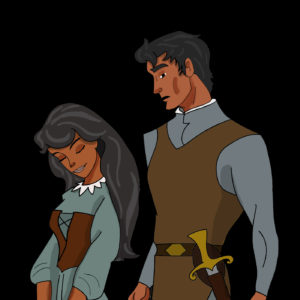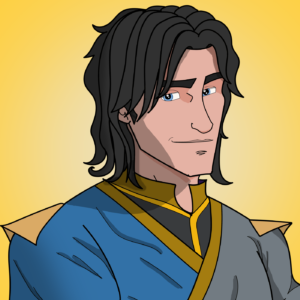Human (hyoo-muhn)
Human anatomy in Fabella was no different compared to those born on Earth. Humans of Fabella were not the apex predators, so they had to be considerably more athletic and stronger in order to survive. They were usually the center of widespread revolts, political upheaval, and magical phenomena. Out of all the people groups in Fabella, most witches and wizards were human. Men and women were highly sought after in the armed forces both for their ingenuity and cunning developed over years of competing with other people groups for attention.
Skills
Men were mainly known for their skills in construction. Human construction typically contained a host of geometrical shapes. Women were first recognized for their talents in interior decorating and painting. Many husbands and wives in the early years of Fabella maintained businesses where the men of the house would perform construction work and the women would handle decoration along with their other household duties.
Witches and wizards were predominantly human throughout recorded history. Scholars hypothesized this trend originated from the human struggle to compete with other races. Regardless, magic became so entwined with human culture in Fabella to the point that some parents disowned and even murdered children who couldn’t produce magic.
Art
Art took many forms, though it is jewelry, textiles, and architecture that humans were best known for. This style was referred to as “Manesque (Mahn-ehsk).” Manesque was a form of artistic decoration with hidden musical beats embedded in the work. This technique also made its way into architecture as a musical combination to locked doors and hidden passageways that where inaccessible to magic. Some paintings were said to sound different to whomever viewed the work, resulting in their overall interpretations. Hidden messages for specific people could also be hidden in art and was widely used for espionage during wartime.
Music
Human music had a long history of interaction with many other regional musical styles and genres. Drums and repeating rhythmic beats were heavily featured, even in tones inspired by those used by other people groups.
Demographics
At its height, there were approximately one billion humans in Fabella. That number dwindled down to around 7 million by the time Fabella ended. Human led governments were typically rooted firmly in religion. They shared basic beliefs and values that crossed national and social class boundaries. Social attitudes remained constant because human society was more conservative and demanded conformity.
Religion
Most humans were Aphrodesian — a monotheistic belief centered on the savior Aphrodite’s message of love for each other. Major numbers of humans also practiced Occult worship, which resulted in hair loss and premature wrinkles among other physical drawbacks.


